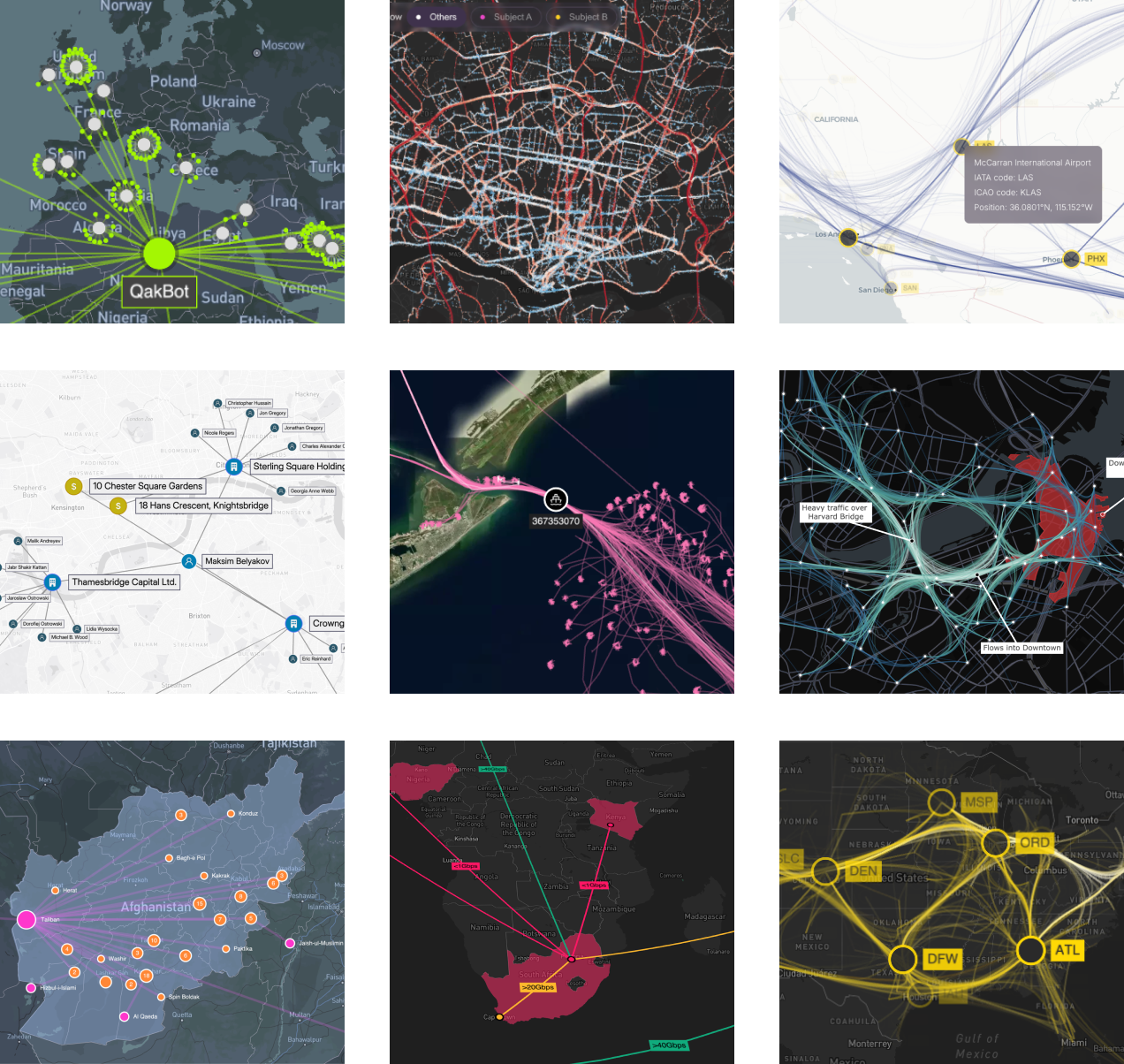Welcome to the first early access release of MapWeave, the SDK that allows you
to unite geospatial, network and timeline insights in one interactive visualization.
We really appreciate your time and feedback during the early access program, and can't wait to hear about what you're building with MapWeave and how we can improve it for you.

Take a look at the Showcases and Examples to see what you can build with the first release.
All the examples can be opened in the Playground, where you can change the code
directly within the page. We've also created a Getting Started guide so you can
get up and running with your first MapWeave application.
Known Issues
- Special characters aren't currently displayed on node labels. Please use ASCII characters 32-128. Fixed in 0.8.
What's Next?
We'll be making regular point releases during the early access period,
so keep an eye on the release notes. We'll do our best to avoid significant
breaking changes, but this is early days for the API so there may be situations where
we do need to make changes. We'll always document any breaking changes in the release notes.
As well as priority fixes and documentation improvements, next we'll be addressing:
- Quality of life improvements, such as a 'zoom to fit' API.
- Features for summarizing and aggregating large quantities of observations data.
But this is your early access program - so please do let us know what features or improvements
would help you get the most out of the toolkit by contacting [email protected].

